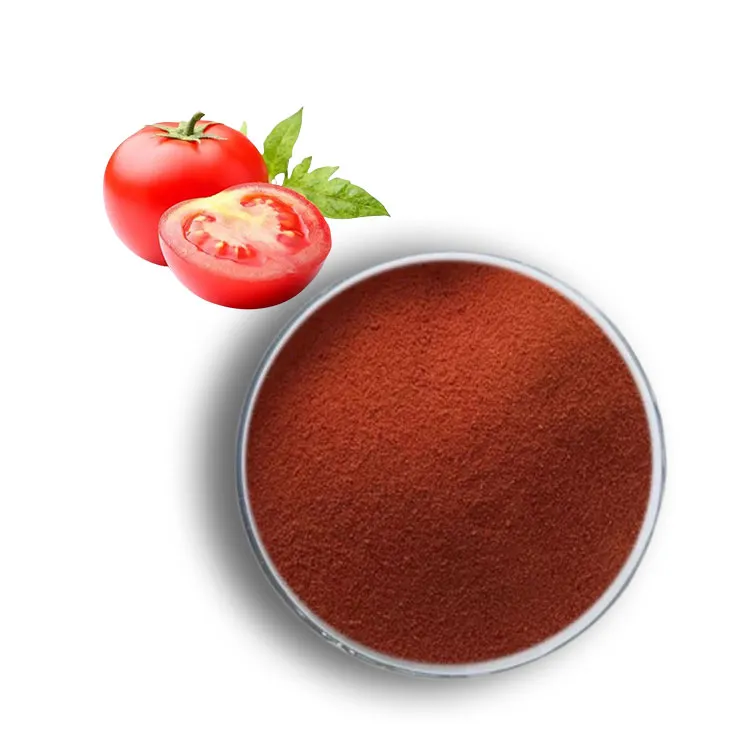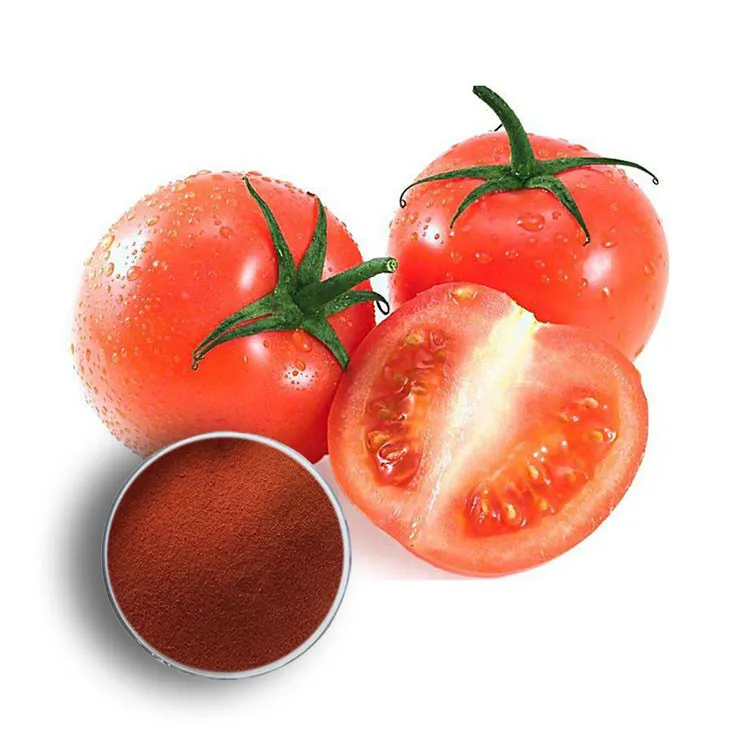- 0086-571-85302990
- sales@greenskybio.com
Lycopene: China vs. the United States
2024-11-29

1. Introduction
Lycopene, a powerful antioxidant, has been the focus of much research in both China and the United States. It is widely known for its potential health benefits, such as reducing the risk of certain diseases and promoting overall well - being. However, the approaches to Lycopene research and its market development in the two countries show both similarities and differences.

2. Lycopene in China
2.1 Emerging Role in Functional Foods and Dietary Supplements
In China, lycopene is gradually emerging as a popular ingredient in the functional food and dietary supplement sectors. With the increasing awareness of health among the Chinese population, there is a growing demand for products that can enhance health in a natural way. Lycopene - rich foods, such as tomatoes and tomato - based products, are being explored for their potential in this regard. Many Chinese companies are starting to include lycopene in their product formulations, whether it is in the form of capsules, tablets, or added to functional beverages.
2.2 Research on Anti - aging
There is also research on its role in anti - aging in China. The Chinese scientific community has recognized the antioxidant properties of lycopene and is investigating how it can combat the oxidative stress that is associated with aging. Studies are being carried out to understand how lycopene can protect cells from damage, improve skin health, and potentially slow down the aging process at a molecular level. Although these studies are still in the relatively early stages compared to some international counterparts, they show great potential for further development.

3. Lycopene in the United States
3.1 In - depth Scientific Studies on Molecular Mechanisms
The US has more in - depth scientific studies on the molecular mechanisms of lycopene's health benefits. American researchers have been at the forefront of exploring how lycopene interacts with cells, genes, and proteins in the body. For example, they are studying how lycopene can modulate gene expression related to inflammation and cancer prevention. These in - depth studies have provided a more comprehensive understanding of how lycopene exerts its beneficial effects, which in turn can guide the development of more targeted health interventions.
3.2 Mature Consumer Market for Lycopene - rich Products
Moreover, the US consumer market for lycopene - rich products is more mature. American consumers are generally more aware of the potential health benefits of lycopene, and there is a well - established market for products containing this compound. From high - end dietary supplements to fortified foods, there is a wide range of options available for consumers who are interested in incorporating lycopene into their diet. This maturity is also reflected in the marketing and advertising strategies of companies, which are more sophisticated in promoting lycopene - based products.

4. Comparison between China and the United States
4.1 Research Depth and Focus
The research on lycopene in the United States is more focused on the molecular and cellular level, aiming to uncover the fundamental mechanisms underlying its health effects. In contrast, while China is also conducting research on lycopene, the focus is more on its practical applications in areas such as anti - aging and functional foods. This difference in focus reflects the different stages of development in the scientific research environment and the market demands of the two countries.
4.2 Market Maturity
As mentioned before, the US market for lycopene - rich products is more mature. This means that there are more established brands, more diverse product forms, and a higher level of consumer acceptance. In China, although the market potential is huge given its large population, it is still in the process of development. There is a need for more education about lycopene among consumers, as well as the development of more reliable and high - quality products.
5. Potential for International Cooperation
International cooperation in lycopene research between the two countries holds great promise for future development. China and the United States can learn from each other's strengths. For example, the US can share its advanced research techniques and knowledge on molecular mechanisms with China, while China can provide a large sample base for research and a growing market for lycopene - based products. Collaborations can take the form of joint research projects, exchange of scientists, and sharing of research data.
5.1 Joint Research Projects
Joint research projects can focus on areas such as exploring new sources of lycopene, improving extraction methods, and further investigating its health benefits. By combining the resources and expertise of both countries, these projects can achieve more significant results than individual efforts. For example, Chinese and American researchers can work together to study the bioavailability of lycopene from different sources in different populations, which can help in the development of more effective lycopene - containing products.
5.2 Exchange of Scientists
The exchange of scientists between China and the United States can also enhance international cooperation. Chinese scientists can visit American research institutions to learn about the latest research methods and concepts, while American scientists can come to China to explore the potential of the Chinese market and collaborate with Chinese colleagues on research projects relevant to the Chinese population. This two - way exchange can not only promote the progress of lycopene research but also strengthen the cultural and scientific exchanges between the two countries.
5.3 Sharing of Research Data
Sharing of research data is another important aspect of international cooperation. By sharing data on lycopene research, both countries can avoid duplication of efforts and accelerate the pace of research. For example, if American researchers have already conducted certain pre - clinical or clinical trials on lycopene, sharing the data with Chinese researchers can help them to design more targeted follow - up studies. Similarly, Chinese research data can also provide valuable references for American researchers.
6. Conclusion
In conclusion, the comparison of lycopene between China and the United States shows that both countries have their own characteristics in terms of research and market development. While the US has an advantage in in - depth scientific research and a more mature market, China has a huge market potential and is making progress in relevant research. International cooperation between the two countries can bring more opportunities for the development of lycopene - related fields, whether it is in research, product development, or market expansion.
FAQ:
What are the main differences in lycopene research between China and the United States?
In China, lycopene is becoming popular in the functional food and dietary supplement sectors and there is research on anti - aging. The United States has more in - depth scientific studies on the molecular mechanisms of lycopene's health benefits.
How is the consumer market for lycopene - rich products in China compared to the United States?
The US consumer market for lycopene - rich products is more mature. In China, although the market is still developing, it has huge potential due to its large population.
What are the prospects for international cooperation in lycopene research between China and the United States?
International cooperation in lycopene research between the two countries holds great promise for future development as they can share resources, knowledge and technologies.
What are the common research areas of lycopene in China?
In China, common research areas of lycopene include its application in functional foods and dietary supplements, as well as its role in anti - aging.
What are the advantages of the US in lycopene research?
The US has an advantage in lycopene research in terms of conducting more in - depth scientific studies on the molecular mechanisms of lycopene's health benefits.
Related literature
- Lycopene: Chemistry, Biology, and Therapeutic Applications"
- "Lycopene and Human Health"
- "The Role of Lycopene in Functional Foods: A Review"
- ▶ Hesperidin
- ▶ citrus bioflavonoids
- ▶ plant extract
- ▶ lycopene
- ▶ Diosmin
- ▶ Grape seed extract
- ▶ Sea buckthorn Juice Powder
- ▶ Beetroot powder
- ▶ Hops Extract
- ▶ Artichoke Extract
- ▶ Reishi mushroom extract
- ▶ Astaxanthin
- ▶ Green Tea Extract
- ▶ Curcumin Extract
- ▶ Horse Chestnut Extract
- ▶ Other Problems
- ▶ Boswellia Serrata Extract
- ▶ Resveratrol Extract
- ▶ Marigold Extract
- ▶ Grape Leaf Extract
- ▶ blog3
- ▶ blog4
-
The Most Highly - Praised Lavender Extract.
2024-11-29
-
Organic Goldenseal Extract Powder Suppliers.
2024-11-29
-
Standard - process pine bark extract powder.
2024-11-29
-
Nature's Bounty Almond Powder
2024-11-29
-
Organic Taurine Powder Suppliers.
2024-11-29
-
Bulk purchase of black pepper extract.
2024-11-29
-
Marigold Extract
2024-11-29
-
Ginseng Root Extract
2024-11-29
-
Panax Ginseng Leaf Extract
2024-11-29
-
Carrageenan Extract Powder
2024-11-29
-
Eyebright Extract
2024-11-29
-
Sugarcane Extract
2024-11-29
-
Plantain extract
2024-11-29
-
Berberis aristata Extract
2024-11-29
-
Black Garlic Extract
2024-11-29
-
Beetroot juice Powder
2024-11-29





















